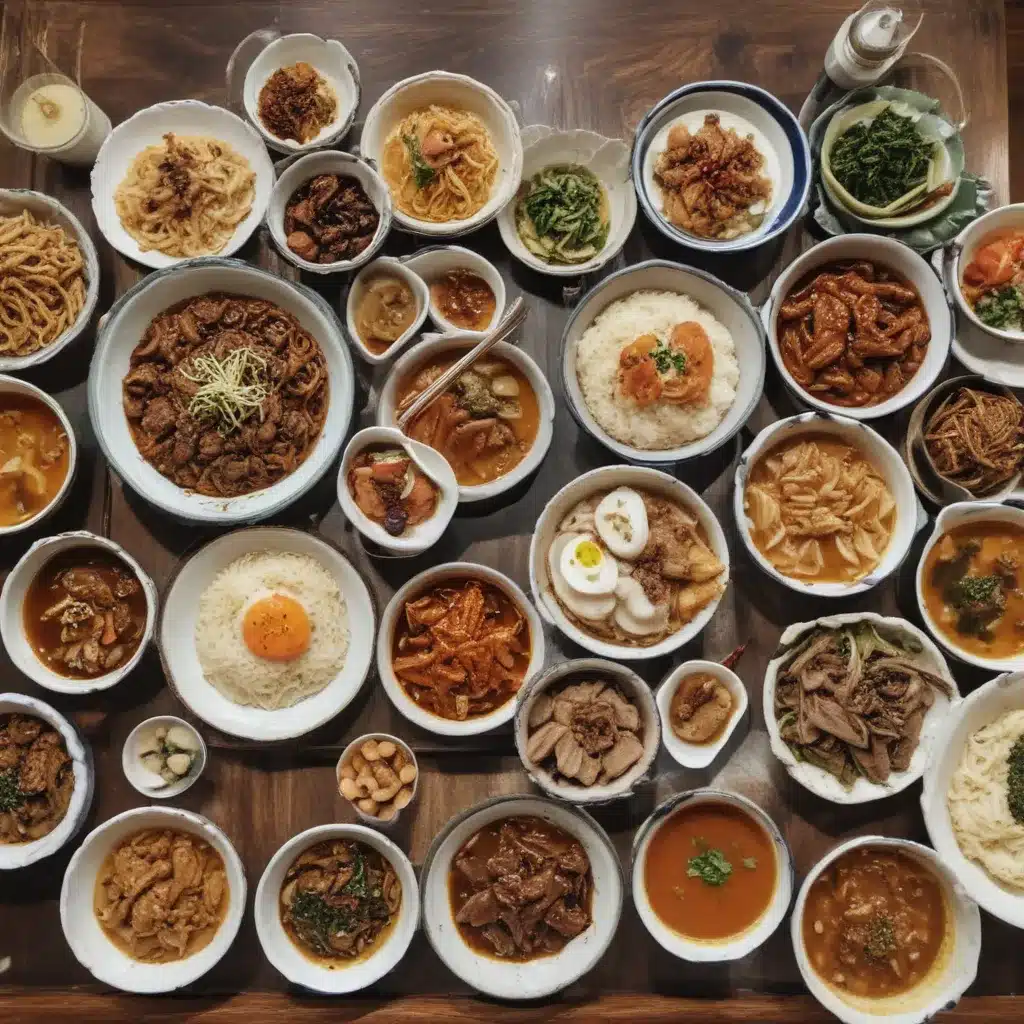
Seoul Food Sojourn: My Korean Culinary Quest
A Delectable Dive into Korean Cuisine
I must confess, until recently, my understanding of Korean food was disturbingly limited. When I thought “Korean cuisine,” the image that sprang to mind was a nondescript assortment of barbecued meat, served alongside a jumble of unidentifiable side dishes. How naive I was! Little did I know that this vibrant, dynamic culinary tradition would soon captivate my senses and capture my heart.
My Korean culinary quest began quite serendipitously. I was wandering the streets of Boston, my stomach grumbling, when a tantalizing aroma wafted through the air, beckoning me towards its source. Upon following my nose, I stumbled upon a modest storefront emblazoned with the words “Seoul Kitchen.” Intrigued, I stepped inside, ready to embark on a flavor journey that would forever change my perception of Korean food.
Kimchi: The Cornerstone of Korean Cuisine
As I perused the menu, my eyes were immediately drawn to a dish labeled “Kimchi Fried Rice.” Now, I consider myself a fairly adventurous eater, but the thought of fermented cabbage as a key ingredient gave me pause. Sensing my hesitation, the owner, a warm-hearted woman named Mrs. Kim, approached me with a warm smile.
“Ah, I see you’re new to our cuisine,” she said, her eyes twinkling. “Let me introduce you to the heart and soul of Korean food – kimchi.”
Mrs. Kim proceeded to enthusiastically explain the cultural significance and health benefits of this pungent, spicy condiment. As she spoke, I couldn’t help but be captivated by her passion and the way she effortlessly wove in tales of her grandmother’s secret recipe and the role kimchi has played in her family for generations.
Intrigued, I decided to take the plunge and order the Kimchi Fried Rice. The moment the dish arrived, the aroma alone was enough to make my mouth water. With the first bite, I was hooked. The perfect balance of salty, tangy, and fiery flavors had me reaching for more, much to Mrs. Kim’s delight.
“You see?” she exclaimed, beaming. “Kimchi is the foundation of our cuisine, the thread that runs through so many of our beloved dishes. It’s not just food – it’s a connection to our history and culture.”
From that day on, I was a convert. Kimchi became a staple in my household, and I found myself eagerly exploring the endless variations, from the classic napa cabbage to radish, cucumber, and even oyster varieties. Each one a unique symphony of flavors, a testament to the ingenuity and creativity of Korean cooks.
Banchan: The Art of Small Plates
As I delved deeper into Korean cuisine, I discovered another captivating aspect – the concept of banchan. These small, shared plates are the essence of the Korean dining experience, a reflection of the country’s emphasis on balance, harmony, and community.
One evening, I found myself at a bustling Korean BBQ restaurant, surrounded by sizzling meats and the lively chatter of diners. The server arrived, bearing a seemingly endless parade of banchan, each one more tantalizing than the last. There were crisp, vinegary pickles, savory sautéed spinach, fiery kimchi, and delicate, sweet-and-sour fish cakes. It was like a symphony of flavors, each element complementing the others in perfect harmony.
I eagerly sampled each dish, marveling at the care and attention that had gone into their preparation. It dawned on me that these banchan were not mere side dishes – they were an integral part of the meal, meant to be savored and shared with loved ones.
“In Korea, we believe that a good meal is not just about the main dish,” explained the server, sensing my fascination. “It’s about the balance of flavors, the variety of textures, and the joy of experiencing it all together.”
As I sat there, surrounded by the lively energy of the restaurant, I couldn’t help but feel a sense of connection to the rich tapestry of Korean culture. Each bite of banchan was a thread in the larger tapestry, a testament to the ingenuity, resourcefulness, and pride of the Korean people.
Exploring the Flavors of the Peninsula
My Korean culinary quest continued, leading me to discover an array of dishes that showcased the breadth and depth of this remarkable cuisine. From the hearty, comforting stews of bibimbap and kimchi-jjigae to the delicate, umami-packed flavors of japchae and tteokbokki, every new discovery left me in awe.
One particular standout was the beloved Korean barbecue, or galbi. As I sat before the sizzling grill, watching the tender slices of marinated beef sear to perfection, I couldn’t help but be mesmerized by the ritual of it all. The server expertly tended to the grill, ensuring each morsel was cooked to the desired level of char and caramelization.
“Galbi is more than just a meal,” the server explained, as he deftly sliced the meat and arranged it on my plate. “It’s a social experience, a chance for family and friends to come together and share in the joy of good food and good company.”
I eagerly wrapped the succulent beef in crisp, cool lettuce leaves, adding a dollop of savory-sweet sauce and a sprinkle of aromatic sesame seeds. The burst of flavors and textures was nothing short of revelatory, and I found myself reaching for more, much to the delight of my dining companions.
As the meal progressed, I found myself immersed in a culinary odyssey that transcended mere sustenance. Each dish I encountered was a window into the rich tapestry of Korean history, culture, and tradition. From the ancient techniques of fermentation to the intricate balance of sweet, sour, and spicy, every bite told a story, and I was enthralled.
A Lasting Impression
As my Korean culinary quest came to an end, I found myself reflecting on the profound impact it had on me. What began as a simple meal had transformed into a deep, personal connection with a vibrant and fascinating culture. The flavors, the traditions, and the sense of community had all left an indelible mark on my palate and my heart.
I know that my journey into the world of Korean cuisine is far from over. The flavors, the stories, and the warm hospitality of the Korean people have etched themselves into my memory, beckoning me to return and explore even further. With each bite, each new discovery, I am reminded of the power of food to transcend borders, to bring people together, and to forge lasting connections.
So, if you find yourself in Boston, seeking a culinary adventure that will transport you to the heart of the Korean peninsula, be sure to seek out the hidden gems of the city’s Korean food scene. Who knows, you might just embark on a journey as delectable and transformative as mine.
